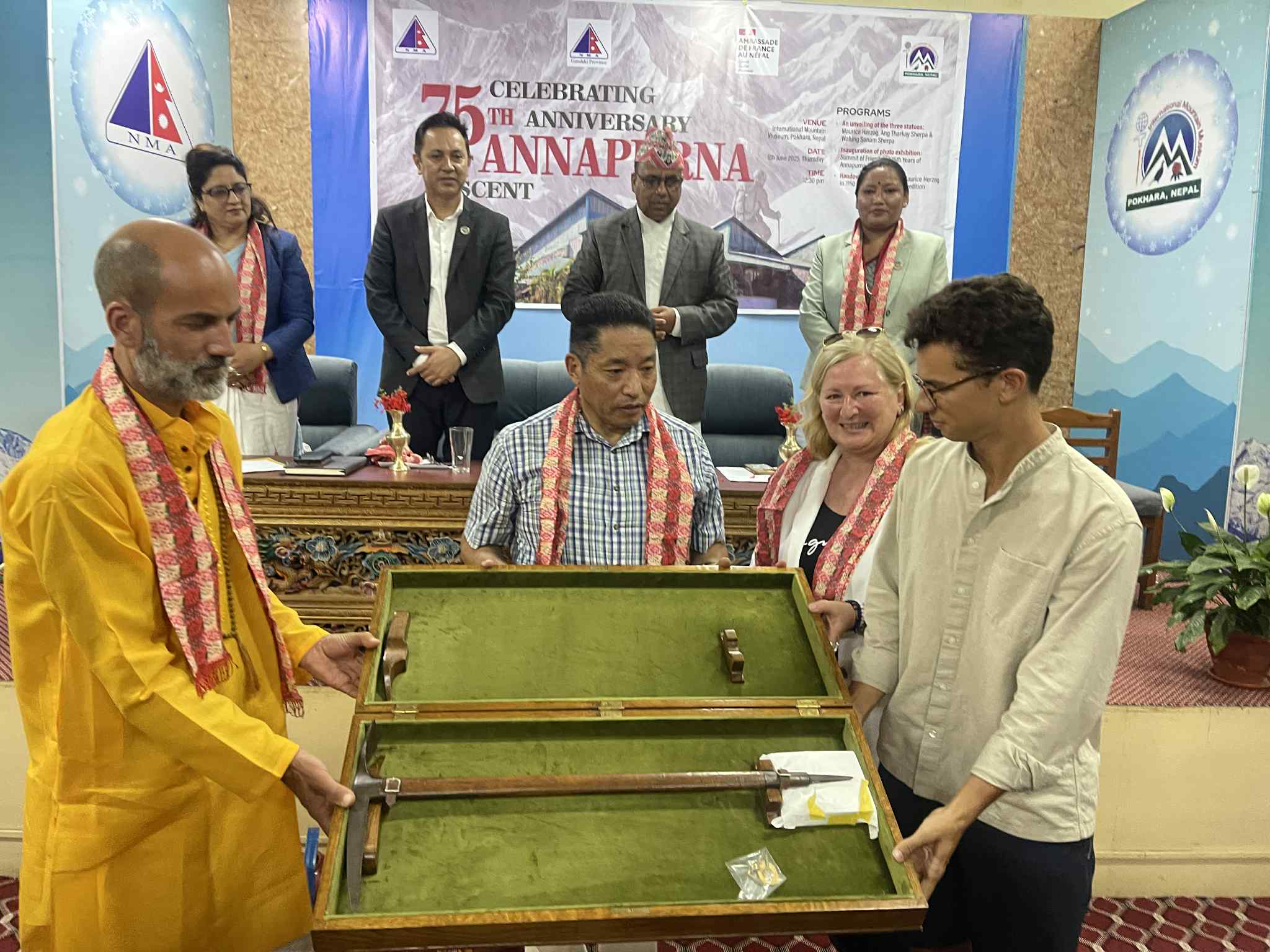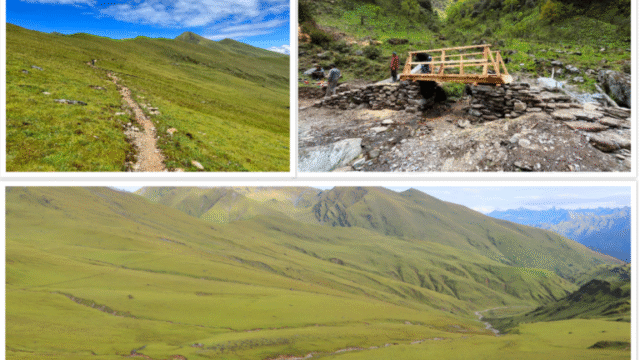The Annapurna Diamond Jubilee Festival is currently being celebrated in Nepal, marking 75 years since the first successful ascent of an 8,000-meter peak. On June 3, 1950, French climbers Maurice Herzog and Louis Lachenal etched their names into the annals of mountaineering history by summiting Annapurna I, the world’s tenth-highest peak at 8,091 meters. This remarkable achievement laid the foundation for Himalayan mountaineering and placed Nepal firmly on the global adventure tourism map.
Annapurna Diamond Jubilee Festival
To commemorate this historic moment, a special event was held on Thursday at the International Mountain Museum in Pokhara. The highlight of the event was the symbolic handover of Maurice Herzog’s original ice axe, used during the pioneering ascent, to the Nepal Mountaineering Association (NMA), which operates the museum. The artifact, previously kept at the Olympic Museum in Switzerland, will be displayed in Pokhara for one year as part of the celebration.
The ice axe was handed over by Herzog’s son Matthieu and other family members to NMA President Nima Nuru Sherpa during the ceremony. This symbolic gesture was not just a tribute to Herzog’s legacy but also an embodiment of the enduring friendship between France and Nepal, forged through shared history in the Himalayas.
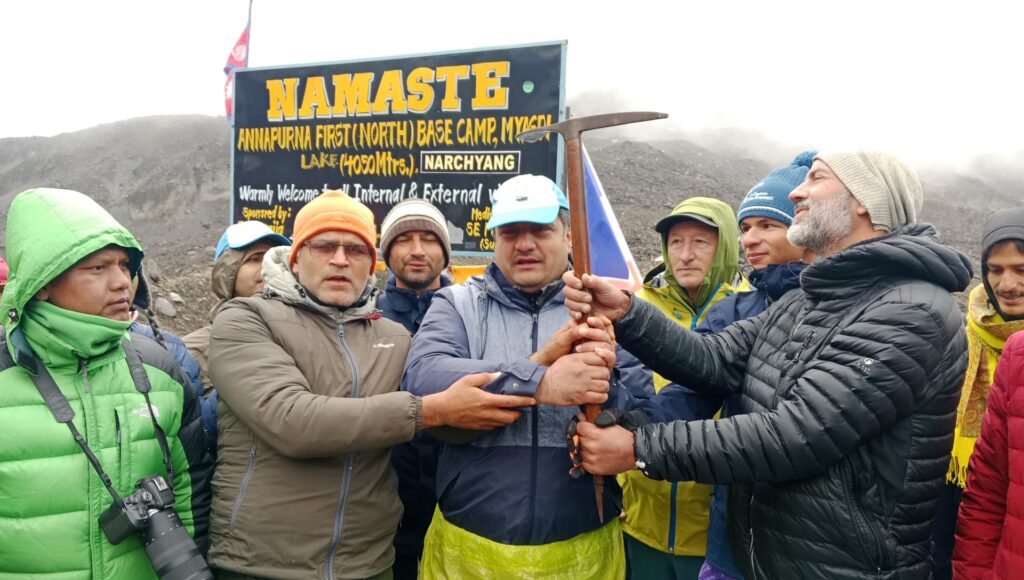
In honor of Herzog’s expedition, the event also included the unveiling of statues of Herzog and his two key Sherpa team members, Ang Tharke Sherpa and Walung Sonam Sherpa, who played critical roles in the success of the 1950 expedition. The statues were unveiled by Nepal’s Minister for Culture, Tourism and Civil Aviation, Badri Prasad Pandey, and the French Ambassador to Nepal, Virginie Corteblanche. Both dignitaries paid floral tribute during the unveiling ceremony.
Speaking at the event, Minister Pandey emphasized the significance of the first Annapurna ascent in Nepal’s mountaineering history. “The ascent of Annapurna was not only a milestone in human exploration but also elevated Nepal’s global stature,” he remarked. “Our nation is blessed with cultural icons like the Buddha, sacred texts like the Vedas, and majestic mountains; together, they define our identity. These mountains are sacred pilgrimage sites of the Himalayas.”
The Minister highlighted that while mountaineering continues to bring recognition and economic benefits to Nepal, the country now faces the growing challenge of climate change, which threatens the fragile mountain ecosystem. He also announced plans to introduce updated tourism policies and legislation soon, underlining the need for private sector investment to further strengthen Nepal’s tourism industry.
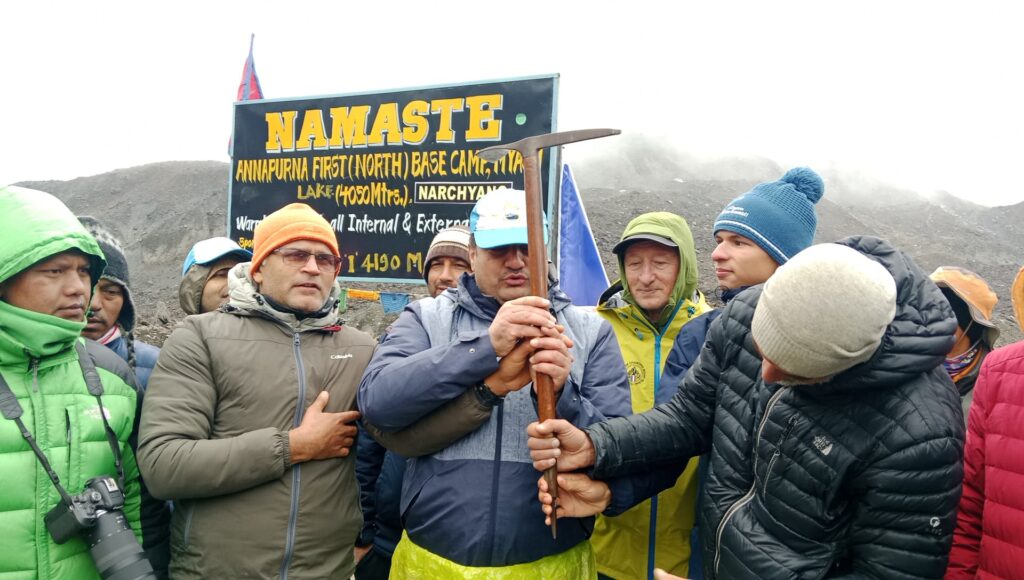
French Ambassador Virginie Corteblanche expressed that the 1950 Annapurna expedition serves as a cornerstone of Nepal-France friendship. “It was a defining moment not only for the mountaineering world but also for the bond between our two nations,” she said. The presence of Herzog’s descendants, including his son Matthieu, added an emotional touch to the proceedings.
Matthieu Herzog reiterated his family’s deep emotional connection to Nepal and emphasized how meaningful it was to share the historic ice axe with the country where the adventure unfolded. Nirmala Kumari Neupane, Executive Director of the International Mountain Museum, confirmed that the artifact would be returned to the Olympic Museum after one year. She also announced plans to create a dedicated “Climbing Wall” in memory of Maurice Herzog to inspire the next generation of mountaineers.
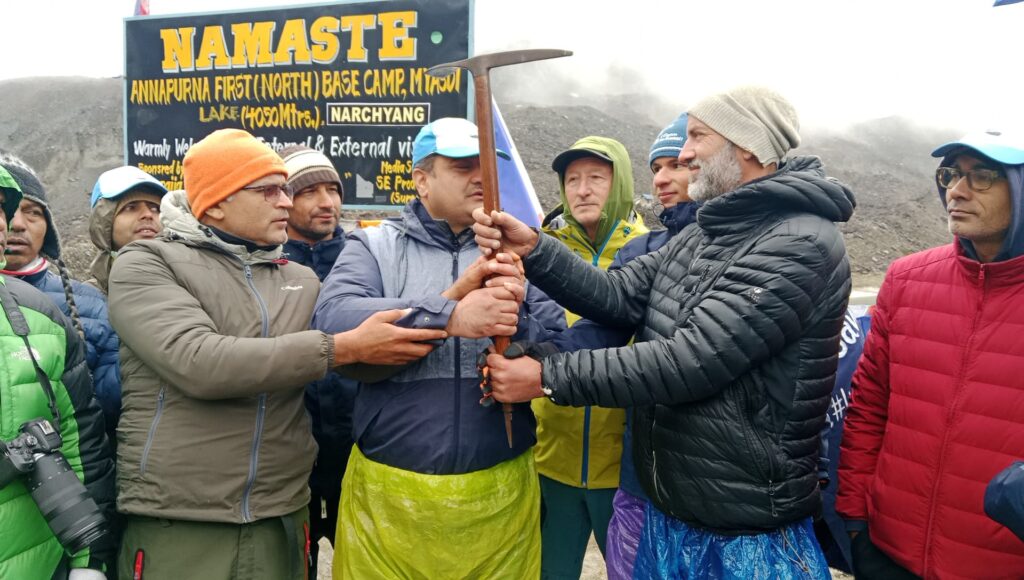
Adding to the celebratory spirit, the event also witnessed the unveiling of the Nepali edition of Herzog’s world-famous book Annapurna, which chronicles the arduous expedition and the climbers’ survival against extreme odds. This edition aims to bring the legendary narrative closer to Nepali readers, especially those passionate about mountaineering and national heritage.
The Annapurna Diamond Jubilee Festival is not only a tribute to the past but also a reaffirmation of Nepal’s central role in global mountaineering. It serves as a reminder of the courage, collaboration, and endurance required to conquer nature’s greatest challenges. The celebration is also expected to further boost tourism in the region, particularly in and around Pokhara, which serves as a gateway to the Annapurna range.
As the festival continues, it stands as a powerful symbol of human achievement, international cooperation, and Nepal’s unique place in the world’s adventure tourism landscape. Through such events, Nepal hopes to strengthen its identity as the home of the Himalayas while advocating for sustainable and responsible mountain tourism.
